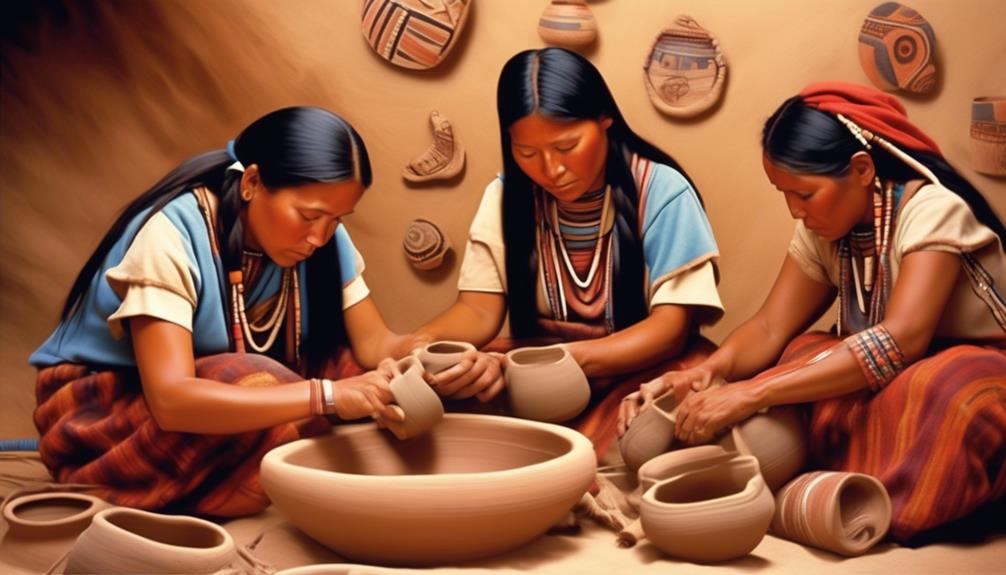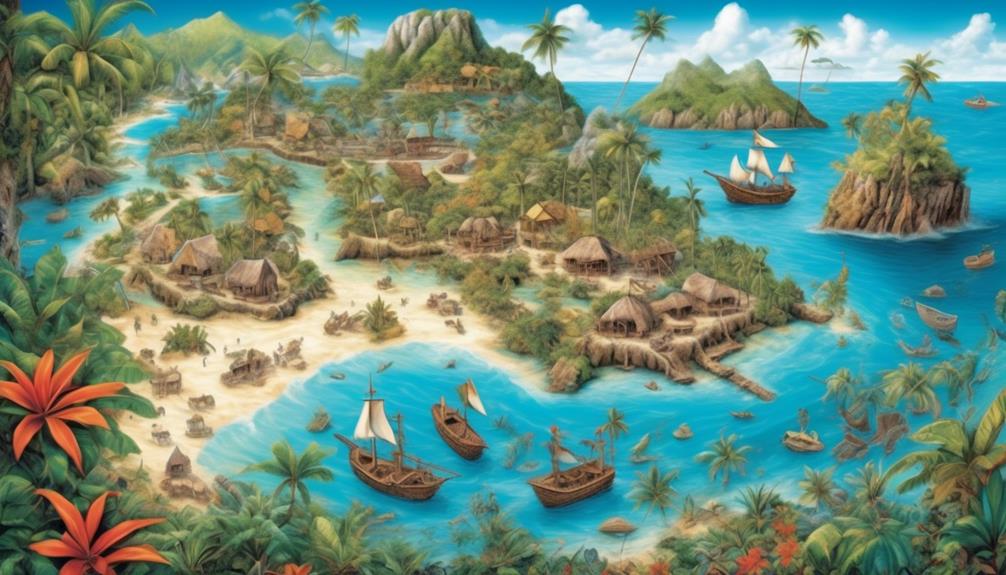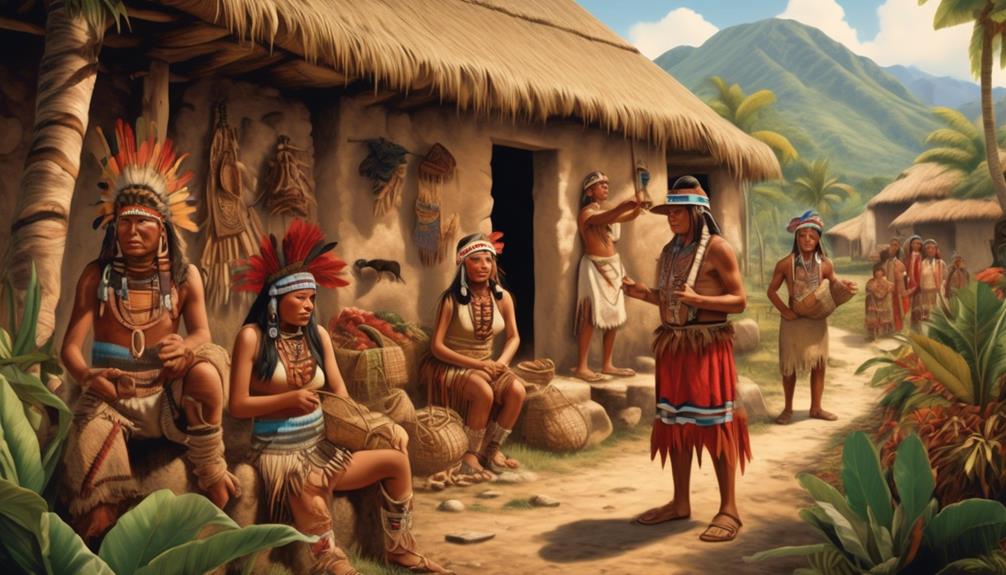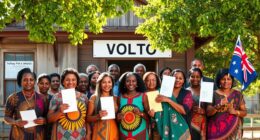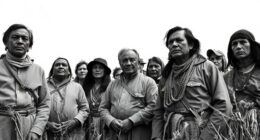Blaming the poverty of indigenous communities on personal decisions or laziness may seem like an easy explanation, but the reality is far more complex.
Despite the progress made in some areas, the persistent economic disparities experienced by indigenous communities are deeply rooted in a history of systemic injustices and ongoing discrimination.
From historical dispossession and land loss to discriminatory policies and limited access to education and healthcare, there are numerous interconnected factors that contribute to the economic challenges faced by indigenous populations.
But what are the specific historical and contemporary factors that have led to this situation?
Key Takeaways
- Historical dispossession and land loss have contributed to intergenerational trauma and limited economic opportunities for indigenous populations, resulting in a higher likelihood of poverty.
- Discriminatory policies and legal barriers, including employment practices, housing segregation, and limited access to justice and resources, perpetuate disparities and hinder indigenous populations from breaking the cycle of poverty.
- Limited access to education and healthcare, including inadequate funding for schools, culturally irrelevant curriculum, and geographical isolation affecting healthcare access, further contribute to the higher poverty rates among indigenous populations.
- Cultural marginalization and stereotyping, perpetuated through misrepresentation, underrepresentation in mainstream media, and harmful stereotypes affecting perception and treatment, make it difficult for indigenous populations to participate in and benefit from opportunities, leading to higher poverty rates.
Historical Dispossession and Land Loss
Historical dispossession and land loss have profoundly impacted indigenous populations, leading to significant challenges in securing their traditional territories and resources. Intergenerational trauma, resulting from the systematic oppression and forced removal from ancestral lands, continues to affect indigenous communities. The ripple effect of these injustices has created enduring barriers to economic stability and social well-being.
Systemic oppression has been a primary driver of the intergenerational trauma experienced by indigenous peoples. The deliberate policies aimed at dispossessing them of their lands and resources have disrupted their traditional ways of life, causing lasting psychological and emotional distress. This trauma has been passed down through generations, perpetuating a cycle of disadvantage and hardship.
The legacy of historical dispossession and land loss has also contributed to the pervasive poverty experienced by indigenous populations. Without secure access to their traditional territories, indigenous communities face limited economic opportunities and often struggle to maintain their cultural practices and livelihoods.
Addressing the ongoing effects of historical trauma and systemic oppression is crucial in empowering indigenous populations to overcome the challenges they continue to face in securing their traditional territories and resources.
Discriminatory Policies and Legal Barriers

Discriminatory policies and legal barriers continue to impede the economic and social progress of indigenous populations, perpetuating their marginalization and hindering their access to justice and resources. Discriminatory employment practices often limit indigenous individuals' opportunities for stable and well-compensated work. Furthermore, housing segregation persists, with indigenous communities frequently facing barriers to accessing adequate housing. These legal barriers not only exacerbate poverty among indigenous populations but also contribute to the perpetuation of social and economic disparities.
| Discriminatory Policies | Impact on Indigenous Populations |
|---|---|
| Employment | Limits opportunities for stable, well-compensated work |
| Housing Segregation | Hinders access to adequate housing |
| Legal Barriers | Perpetuates social and economic disparities |
These discriminatory policies and legal barriers have a profound impact, perpetuating the marginalization of indigenous populations and constraining their ability to break free from the cycle of poverty. Addressing these issues is crucial in order to create a more equitable society where indigenous communities have equal access to opportunities and resources.
Limited Access to Education and Healthcare
Access to quality education and healthcare remains limited for many indigenous populations, perpetuating disparities in opportunities and well-being. Education inequality persists due to factors such as inadequate funding, culturally irrelevant curriculum, and a shortage of qualified teachers. Healthcare disparities also contribute to the cycle of poverty, with indigenous communities facing barriers like geographical isolation, language differences, and a lack of culturally sensitive care. These issues are complex and interconnected, resulting in a multitude of challenges for indigenous peoples' overall development and prosperity.
- Education Inequality
- Inadequate funding for schools
- Culturally irrelevant curriculum
- Healthcare Disparities
- Geographical isolation
- Lack of culturally sensitive care
Addressing these systemic issues requires a multifaceted approach that involves policy reforms, increased investment in infrastructure and human resources, and the active inclusion of indigenous voices in decision-making processes. By prioritizing accessible and culturally relevant education and healthcare, we can work towards breaking the cycle of poverty and fostering thriving indigenous communities.
Cultural Marginalization and Stereotyping
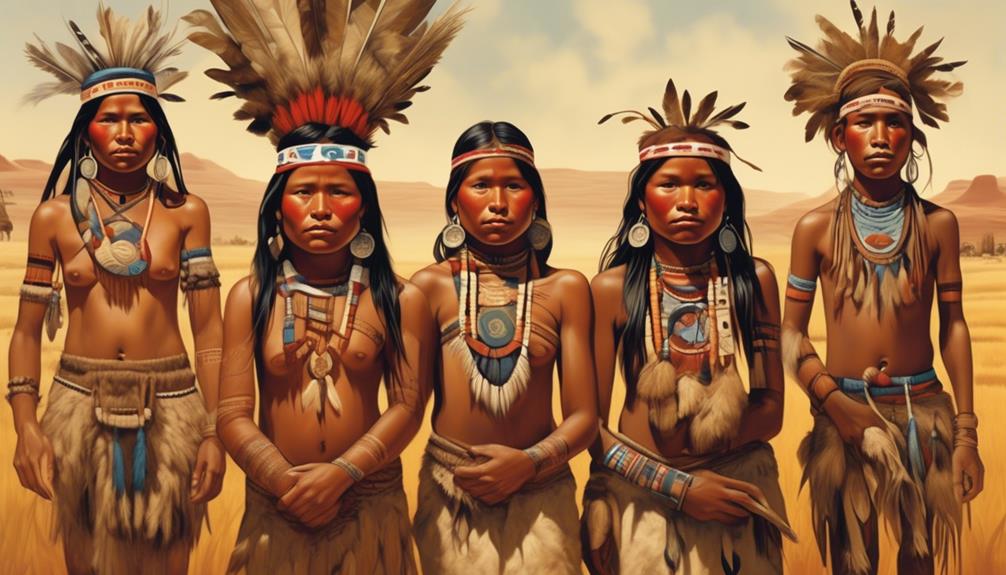
Cultural marginalization and stereotyping continue to shape the experiences of indigenous populations, impacting their access to opportunities and resources. Discrimination against indigenous communities is often perpetuated through the misrepresentation or underrepresentation of their cultures in mainstream media. This lack of accurate representation in media contributes to the perpetuation of harmful stereotypes, which in turn affects the way indigenous individuals are perceived and treated in society. When indigenous cultures are misrepresented or ignored in media, it can lead to a distorted understanding of their traditions, beliefs, and ways of life. This can further contribute to the marginalization of indigenous communities, making it difficult for them to fully participate in and benefit from the opportunities available to the wider population.
| Effects of Cultural Marginalization and Stereotyping |
|---|
| Discrimination |
| Limited representation in media |
Economic Exploitation and Resource Extraction
Despite facing ongoing economic exploitation and resource extraction, indigenous populations persist in their resilience and efforts to protect their lands and livelihoods. The impact of economic exploitation and resource extraction on indigenous communities can't be overstated. Here are some key points to consider:
- Environmental Degradation:
- Indigenous territories are often rich in natural resources, making them prime targets for resource extraction. This has led to widespread environmental degradation, including deforestation, water pollution, and loss of biodiversity.
- The resulting environmental damage not only threatens the indigenous people's traditional way of life but also has far-reaching implications for global ecosystems and climate change.
- Labor Exploitation:
- Indigenous communities are frequently subjected to labor exploitation in industries such as mining, agriculture, and logging. This exploitation manifests in various forms, including low wages, hazardous working conditions, and lack of labor rights.
- The economic benefits derived from the labor of indigenous populations seldom trickle down to improve their living standards, perpetuating the cycle of poverty and marginalization.
The economic exploitation and resource extraction experienced by indigenous populations represent significant challenges that demand attention and action.
Frequently Asked Questions
How Have Indigenous Populations Historically Resisted Dispossession and Land Loss?
We've seen that indigenous populations have historically employed various resistance strategies to combat dispossession and land loss. These include:
- Community solidarity
- Cultural preservation
- Advocacy for land rights
What Specific Legal Barriers Have Indigenous Populations Faced in Accessing Resources and Opportunities?
Legal discrimination has hindered indigenous populations' resource access, perpetuating poverty. They've faced unjust laws restricting land ownership and economic opportunities.
This injustice echoes an old adage: 'The law isn't always just.' We've seen legal barriers denying them rights to traditional lands and natural resources. These discriminatory practices have deepened their economic struggles, reinforcing the cycle of poverty.
Understanding and addressing these legal injustices is crucial for achieving equity and justice.
How Have Traditional Healing Practices and Knowledge Been Marginalized in the Healthcare System?
Traditional healing practices and knowledge play a vital role in the healthcare system, yet they're often marginalized, especially within indigenous populations. This marginalization contributes to disparities in healthcare access and outcomes.
Our understanding of traditional healing and knowledge needs to be integrated into mainstream healthcare to provide more comprehensive and culturally sensitive care for indigenous communities. It's crucial to recognize and respect the value of these practices in promoting overall well-being.
What Are Some Examples of Cultural Stereotypes That Have Negatively Impacted Indigenous Communities?
Examples of cultural stereotypes negatively impacting indigenous communities include:
- The impact of media perpetuating harmful misconceptions.
- Education disparities leading to limited opportunities.
These biases lead to systemic discrimination, hindering access to resources and opportunities. Misrepresentation in media and educational settings contribute to the perpetuation of these stereotypes, further marginalizing indigenous populations.
Such stereotypes create barriers to social and economic advancement, reinforcing the cycle of poverty and systemic inequality.
What Efforts Have Been Made to Ensure That Indigenous Communities Benefit From Resource Extraction and Economic Development in Their Territories?
We've seen progress in ensuring indigenous communities benefit from resource extraction and economic development in their territories.
Community engagement has been key, with indigenous groups actively involved in decision-making processes.
Corporate responsibility has also played a crucial role, with companies taking steps to respect indigenous rights and provide fair compensation.
These efforts have improved relationships and led to more equitable outcomes, like a handshake that strengthens mutual respect and collaboration.
Conclusion
In conclusion, it's clear that indigenous populations are more likely to be poor due to a combination of historical dispossession, discriminatory policies, and limited access to education and healthcare.
It's alarming to note that in some countries, indigenous people are nearly three times more likely to live in poverty compared to non-indigenous populations.
This disparity highlights the urgent need for systemic change to address the root causes of indigenous poverty.

